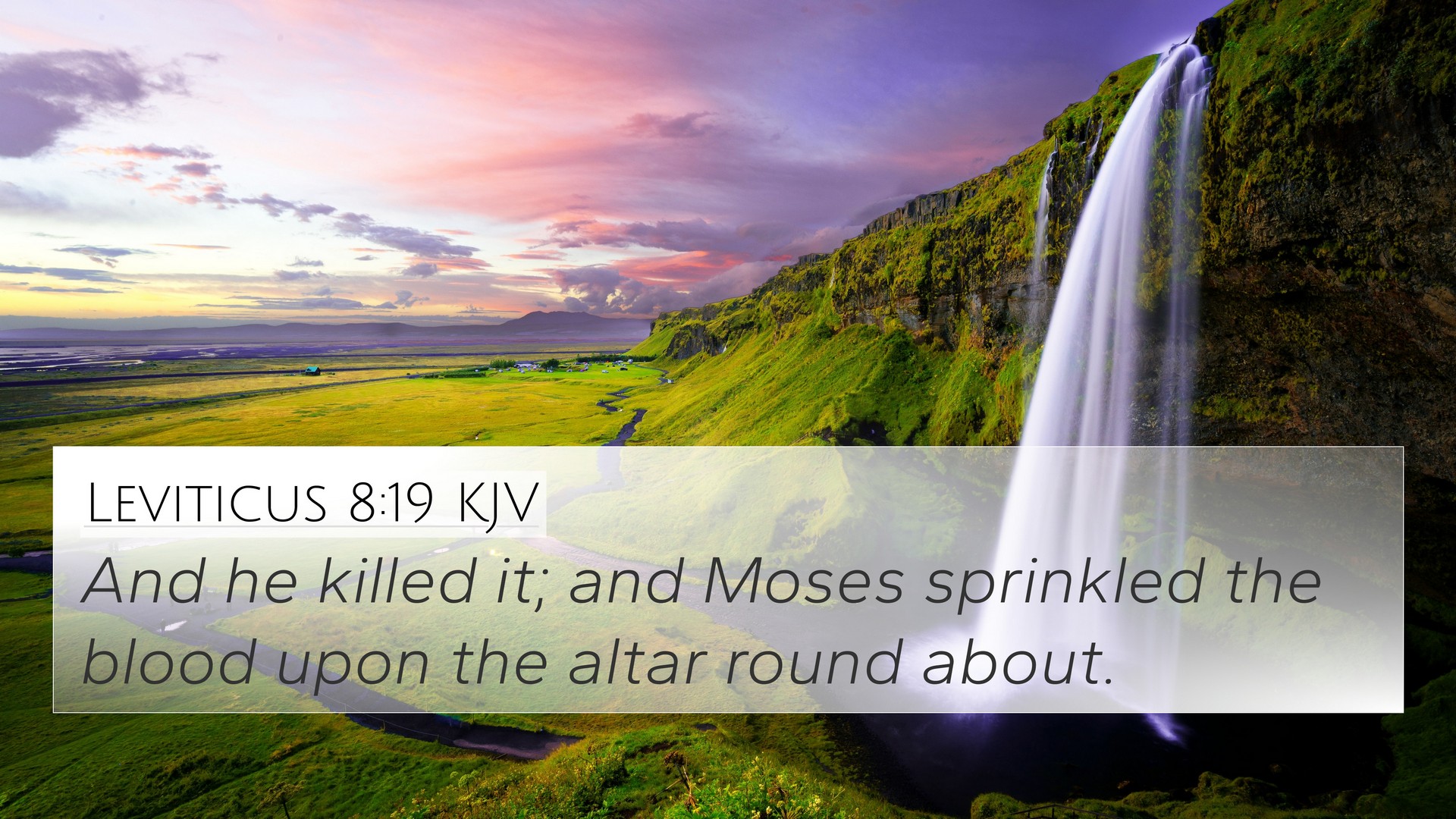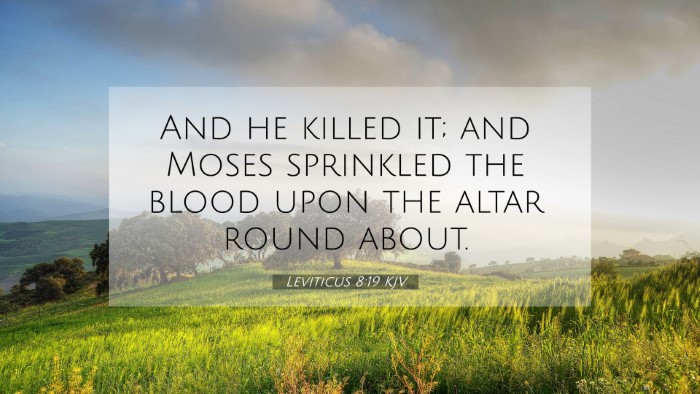Understanding Leviticus 8:19
Leviticus 8:19 reads: “And he killed it; and Moses sprinkled the blood upon the altar round about.” This verse describes part of the consecration ceremony for the priests of Israel. Below, we will explore its meaning through various public domain commentaries.
Summary of the Verse Meaning
In Leviticus 8:19, Moses performs a critical action as part of the priestly ordination ceremony. The act of sprinkling blood symbolizes atonement and the establishment of a covenant between God and the people. The blood represents life and is a central theme in the sacrificial system laid out in the Mosaic Law.
Commentary Insights
-
Matthew Henry's Commentary:
Henry notes that the blood sprinkled upon the altar signifies the purification of the altar itself, which serves as a means of reconciliation between God and Israel. This act emphasizes the gravity of sin and the necessity of atonement through sacrifice.
-
Albert Barnes' Notes:
Barnes provides insight into the symbolism of the blood, highlighting its role in the covenant. He emphasizes that the blood offers a visual representation of the seriousness of the act of consecration and the need for cleansing before approaching God.
-
Adam Clarke's Commentary:
Clarke elaborates on the concept of blood being a central theme in worship, noting it as a critical aspect of the relationship between the people and God. His analysis points out that the sprinkling of blood signifies acceptance and the presence of God among His people.
Thematic Connections and Cross-References
Leviticus 8:19 is interconnected with several other Bible verses that explore the themes of atonement, sacrifice, and priestly duties. Below are notable cross-references:
- Exodus 24:6 - Moses sprinkles blood on the people, signifying the establishment of the covenant.
- Hebrews 9:19 - Refers to the law's requirements for blood in the covenant establishment.
- Leviticus 4:25 - Discusses the blood of sin offerings and their role in atonement.
- Genesis 9:4 - Prohibits the eating of blood, showing its sacred nature.
- Matthew 26:28 - Jesus references His blood in the context of the New Covenant during the Last Supper.
- 1 Peter 1:19 - Describes the precious blood of Christ, connecting the Old and New Testament themes of sacrifice.
- Romans 3:25 - Indicates Christ as a propitiation through His blood for those who believe.
Tools for Understanding Cross-References
To facilitate a deeper understanding of biblical themes and connections, the following tools can be utilized:
- Bible Concordance: A useful resource for finding specific words and their occurrences across scriptures.
- Bible Cross-Reference Guide: Helps to see the relationships between various verses and passages.
- Cross-Reference Bible Study: Encourages exploration of themes by examining how different verses relate.
Application in Modern Context
Understanding the sacrificial system's significance today requires recognizing its fulfillment in Jesus Christ. The principles of atonement and reconciliation are still vital in Christian theology and daily practice.
Further Reflection
As you delve into Leviticus 8:19, consider the broader implications of sacrificial practices in the Bible and how they point toward a deeper relationship with God through Christ. Reflect on the themes of obedience, devotion, and the costs associated with our commitments to God.


